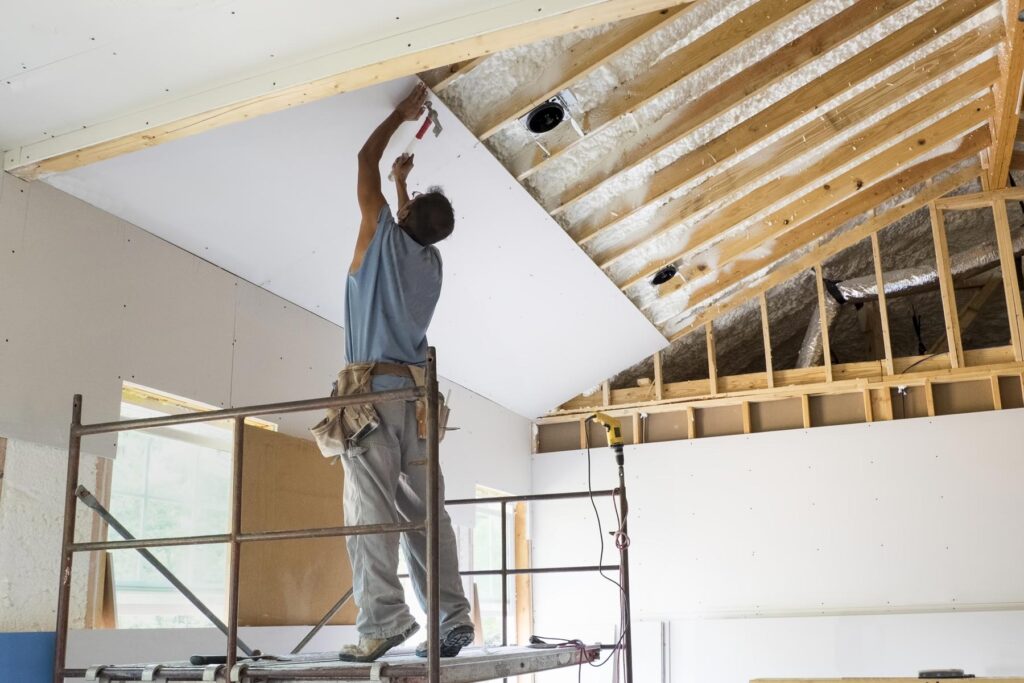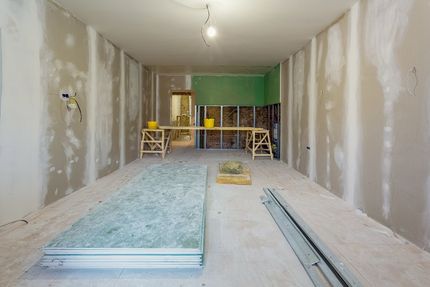Comprehensive Drywall Contractor Assistance for New Builds
Comprehensive Drywall Contractor Assistance for New Builds
Blog Article
Total Overview to Reputable and reliable Drywall Installation
Drywall installment is a critical part of any building and construction or restoration task, demanding a careful technique to make sure both efficiency and integrity. It is vital to discover the nuances of each step in the procedure, as they jointly add to the total success of the drywall installment.
Crucial Tools for Drywalling
When starting a drywall setup project, having the right devices is vital for attaining an expert coating. Vital tools include a drywall knife, measuring tape, and a T-square, which are fundamental for accurate measurements and smooth cuts. A drywall lift is additionally very advantageous, especially for ceiling installations, permitting much easier handling of heavy panels.
For securing the drywall, a cordless drill and drywall screws are essential. The drill must be outfitted with a drywall bit to ensure performance and precision. Furthermore, an essential device is the drywall saw, which promotes cutting about electric outlets and other obstacles.

Moreover, safety equipment such as shatterproof glass and a dust mask are vital to guarantee personal security throughout the setup process. Using the right tools not only improves the high quality of the installment however also simplifies the workflow, making the job extra reliable total.
Preparing the Space

Following, assess the problem of the wall surfaces and ceilings. Repair any type of existing damage, such as openings, splits, or peeling paint, to ensure a smooth and also surface area for drywall application. Furthermore, look for electric outlets, plumbing lines, and a/c ducts, noting their locations to stay clear of problems during installment.
It is also critical to gauge the room accurately, establishing the dimensions of the wall surfaces and ceilings to calculate the suitable quantity of drywall needed. Produce a thorough plan that includes the layout and alignment of the drywall panels.
Installation Techniques
Efficient installment techniques are crucial for attaining a professional surface in drywall tasks. Correct measurement and cutting of Check Out Your URL drywall sheets are essential steps. Constantly gauge the wall surface space accurately, enabling any electrical outlets or buttons. Use an utility blade for tidy cuts, scoring the paper face and snapping the board along the scored line.
When hanging drywall, begin with the top and work downward, ensuring that the long side of the board is perpendicular to the framing. Secure the sheets with screws instead of nails, which provide greater holding power and reduce the danger of standing out. Area screws every 12 inches along the sides and every 16 inches in the area of the board.
For corners, utilize edge grains to attain sharp, tidy sides. When setting up on ceilings, use a drywall lift or have a companion aid in holding the sheets in area (drywall contractor). Maintain a void of concerning 1/4 link inch over the flooring and ceiling to suit expansion and tightening
Finishing Touches

Begin by applying joint tape over the joints. This can be either paper or fiberglass harmonize tape, with paper being liked for its toughness. As soon as the tape remains in place, it's time to use the very first coat of joint substance, also referred to as mud. Use a 10 to right here 12-inch taping blade to spread the substance uniformly over the taped joints, feathering the edges to mix with the surrounding drywall.
Enable the compound to dry extensively, usually 24 hr. After drying out, sand the surface gently with fine-grit sandpaper to remove any type of blemishes. drywall installation. Repeat the mudding and sanding process, generally a couple of layers, guaranteeing each layer is smooth and flush with the drywall surface area
Common Errors to Stay Clear Of
Several DIY enthusiasts come across challenges throughout drywall installment that can compromise the final results. One usual mistake is stopping working to appropriately reduce and determine drywall sheets.
Another regular error is improper fastening. Using too few screws or nails can result in loose drywall, while overdriving fasteners can cause the paper to tear, compromising the structure. It's essential to maintain consistent spacing, generally every 16 inches, and to ensure that fasteners are flush with the surface area.
In addition, not resolving dampness problems before installation can cause mold and mildew development and structural damage. Always examine the atmosphere and use moisture-resistant drywall in high-humidity areas.
Final Thought
Effective and reliable drywall setup calls for meticulous interest to information throughout the procedure. Staying clear of common mistakes additionally adds to a professional result, highlighting the relevance of accuracy and technique in successful drywall tasks.
It is vital to check out the subtleties of each action in the procedure, as they jointly contribute to the overall success of the drywall installation.When beginning on a drywall setup job, having the right devices is essential for achieving a professional finish.For fastening the drywall, a cordless drill and drywall screws are required.Correctly preparing the area is necessary for a successful drywall installment.Reliable setup methods are important for attaining a specialist surface in drywall tasks.
Report this page